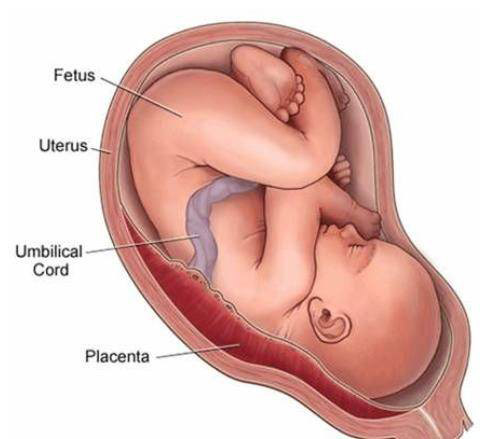umbilical cord

Human fetus in the womb attached by an umbilical cord to placenta.
1. In biology, the umbilical cord is a ropelike structure, 40–60 cm long, linking the developing embryo or fetus to the placenta through most of pregnancy. It consists of blood vessels (two arteries and a vein) taking blood to and from the placenta, and a gelatinous matrix. Shortly after delivery, the cord is clamped to prevent blood loss, cut between the clamps, and is used to assist delivery of the placenta. The stump of the cord undergoes atrophy and becomes the umbilicus (navel).
2. In rocketry, the umbilical is: (a) any of the servicing electrical or fluid lines between the ground and an upright rocket or missile before launch, or (b) the cord that, in early manned missions, attached a space-walking astronaut to his or her spacecraft.


